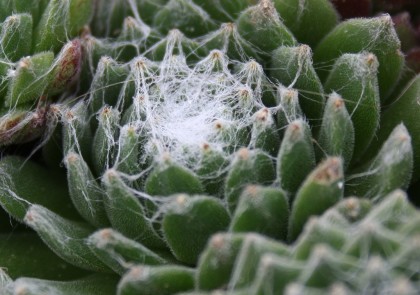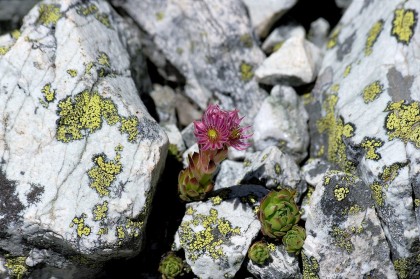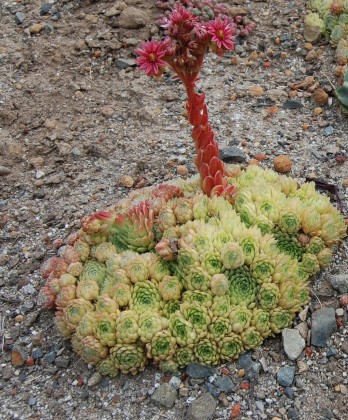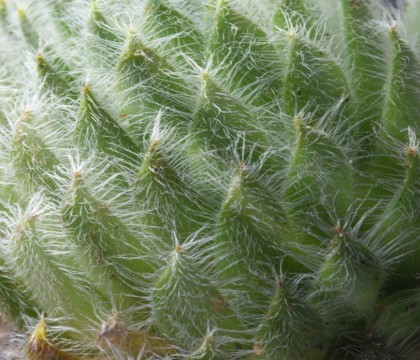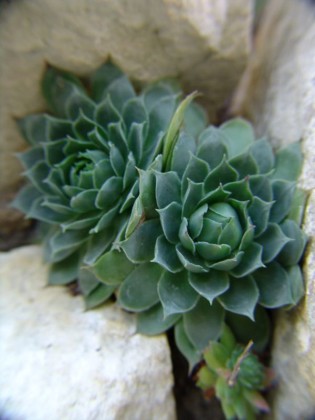(Photograph = Sempervium hybrid, Pnay Gem)
Introduction
The world has many areas that alternate between cold winters and dry summers. The mountains of southern Europe including Turkey and nearby areas can reach -20F or colder in some winters. Plants that survive the cold of those winters and the drought of those summers are special.
The Details
Sempervivum species hybridise easily and vary much in details. Some species turn reddish in cold weather, have blue-gray leaves, or are nearly chartreuse green. The dozens of species have given rise to an endless number of hybrids and varieties. Some forms are hardy to -40F.
Sempervivum plants are not large but they often create large clusters of rosettes. The fleshy leaves surround a central rosette. Sempervivum flowers have five petals and many more stamens. The flowers are typically pink, yellow, or white. Once a particular rosette blooms it dies; the plants are monocarpic.
Jovibarba, Prometheum, and Rosularia are similar plants that share similar habitats in northern Africa, Iran, and even China. All four genera are easy to grow and do well in areas with cold winters in locations where they have good or excellent drainage.
Additional Reading: Etudes sur le genre Sempervivum (French)

